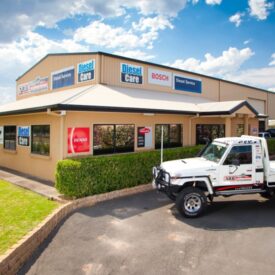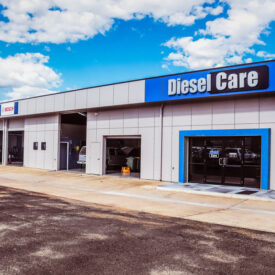-
My vehicle has an auxiliary fuel filter, will there be room for a Catch Can too?
That depends on the vehicle. In some cases the two units are installed in completely different locations, in others a dual bracket capable of mounting both units is available. Call us on 1800 880 150 and we can advise you.
-
Can I install the unit myself?
Yes, all you need is some mechanical aptitude, basic hand tools, and common sense. Our kits come with step-by-step instructions to keep you on track.
-
If this deposit build-up is such a common problem why don’t manufacturers fit a mist separator in production?
Good question. The answer is a few do..…. but not many. Most manufacturers seem more focused on meeting emission requirements when the vehicle leaves the showroom than they are about the harmful side-effects of the methods used to meet those requirements. It may be that, generally speaking, vehicles are built to a price point so things are left off the list.
-
My vehicle is still under warranty, is this affected?
Aftermarket products can sometimes tempt vehicle manufacturers to look for loop-holes. It’s most unlikely any manufacturer would view a Mist Separator in a negative way, after all, it prevents a known problem. If you are in doubt you should discuss the installation and any warranty ramifications with your service advisor.
-
Does a Catch Can have any effect on the roadworthiness of my vehicle?
No, fitting a Catch Can is completely legal.
-
I’ve seen other brands of separators, why do you use Provent?
We believe the Provent range of separators are the most efficient design available for mist separation. All air passing through the separator has to pass through a cellulose membrane, effectively filtering out the oil & water vapour. The design also has safety features that protect against crankcase over-pressurisation. In short; they are high quality and work well.
-
Catch Cans weren’t needed on older engines, so why are they needed now?
Diesel engines before around 2002 did not have Exhaust Gas Recirculation (EGR). Before EGR a little oil mist in the intake system presented no real problem. It’s only when EGR was introduced that the problem of carbon deposits raised it’s ugly head. Since it’s illegal to disable EGR, the best way to deal with the problem is to remove oil from the recipe.
-
Why do I need an Oil Mist Separator (Catch Can)?
Essentially; it’s to prevent or reduce carbon deposit accumulation in the intake manifold of engines. This requires some explanation: Modern diesel engines suffer from a condition brought about by an emission control process called Exhaust Gas Recirculation (EGR).
In the EGR process some exhaust gases are piped to the air intake system, this modifies the combustion process thereby lowering Nitrous Oxide emissions produced. The hot exhaust gas contains carbon (soot) and other by-products of combustion that would not normally attach to the intake manifold if not for another emission control process called Closed Crankcase Ventilation (CCV).
Crankcase ventilation gases are also piped to the air intake system, this gas contains oil mist and water in the form of condensation. When the crankcase gases from CCV combine with the exhaust gases from EGR, the oil mist mixes with the soot particles to produce a mixture that attaches to the walls of the intake manifold. It’s the combination of the oil with soot that creates the problem.
These deposits build up over time to a point where they severely restrict the flow of air, causing reduced performance and fuel efficiency. Removing the deposits involves disassembly of the intake system from the engine, both time consuming and expensive.
By installing an Oil Mist Separator, often called a Catch Can, the oil mist and water vapour are substantially removed from the combination thereby taking away the ingredient that allows the soot to stick. The result is that the build-up of deposits is GREATLY reduced.
-
What is an Oil Mist Separator (Catch Can)?
An Oil Mist Separator is a device that separates microscopic oil and water particles from air when the air stream is passed through it. They are commonly used on internal combustion engines to prevent oil mist, from fumes vented from the engine crankcase, from entering the air induction system. The oil is caught in a vessel, this is where the slang term Catch Can comes from.
Store Locations
Diesel Care Locations in Queensland and New South Wales

Dalby
Queensland

Goondiwindi
Queensland

Tamworth
New South Wales

Toowoomba
Queensland